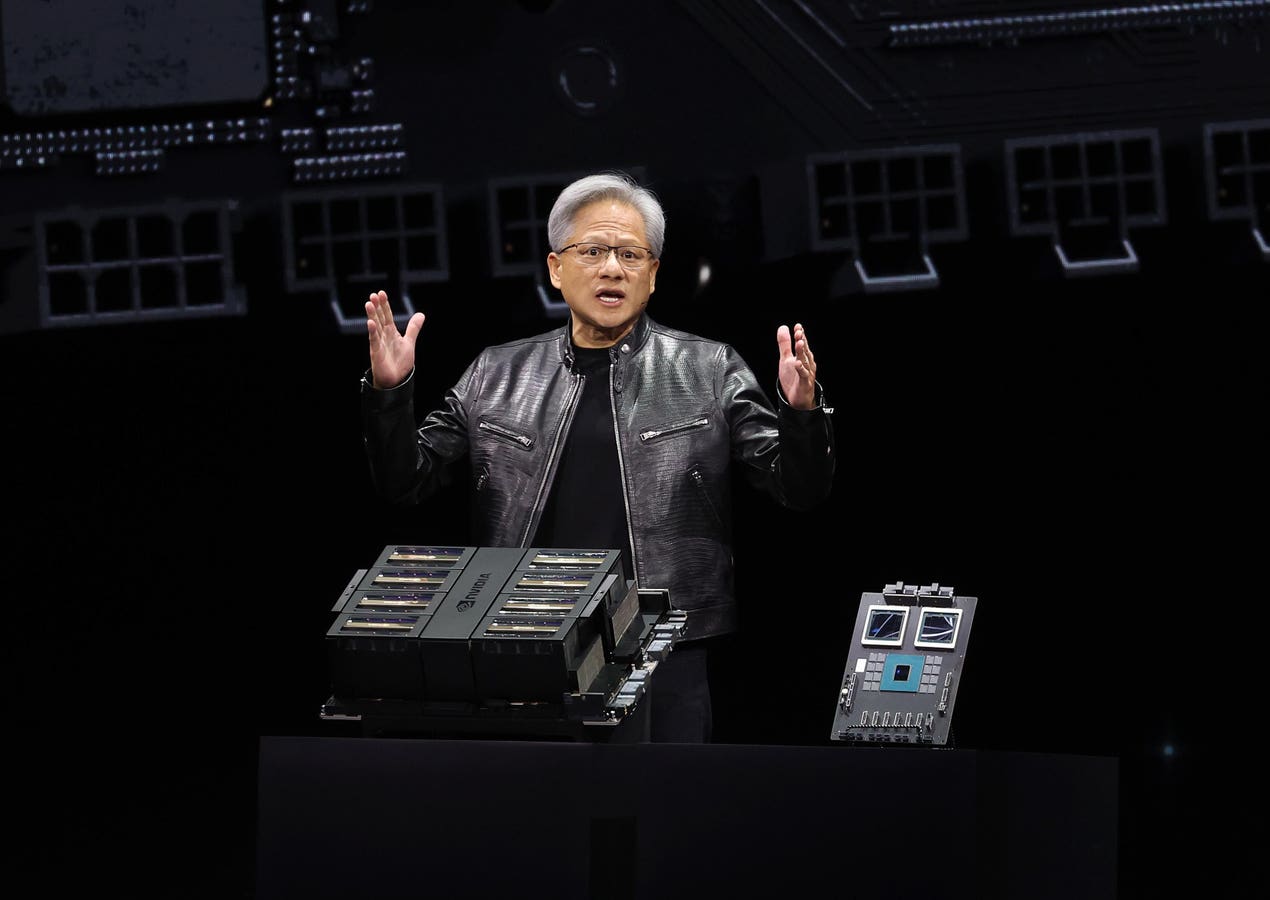Innovation and Technology
The AI Teacher: How Machines are Assisting Educators

AI and Automation for Impact
In the ever-evolving world of education, technology has revolutionized the way we learn and teach. The integration of artificial intelligence (AI) and automation is transforming the way educators deliver instruction, assess student progress, and personalize learning experiences. As AI technology continues to advance, it is becoming increasingly clear that machines are not only assisting educators but also enhancing the overall quality of education.
The Rise of AI in Education
The rise of AI in education is not a new phenomenon. For years, AI-powered learning tools have been used to improve student outcomes, increase efficiency, and enhance the learning experience. However, the recent surge in AI adoption in education is marked by a growing recognition of the potential benefits it can bring to the classroom.
Personalized Learning
One of the most significant advantages of AI in education is its ability to provide personalized learning experiences. AI-powered learning systems can analyze vast amounts of data, identifying individual students’ strengths, weaknesses, and learning styles. This information can be used to create customized lesson plans, adaptive assessments, and targeted interventions, ensuring that each student receives the support they need to succeed.
Enhanced Assessment and Feedback
AI is also revolutionizing the way we assess student performance and provide feedback. Automated grading systems, for example, can quickly and accurately grade assignments, freeing up instructors to focus on more important tasks. Additionally, AI-powered adaptive assessments can provide immediate feedback, helping students identify areas for improvement and track their progress over time.
The Benefits of AI in Education
So, what are the benefits of AI in education? The list is long and varied, but some of the most significant advantages include:
Improved Student Outcomes
* Personalized learning experiences tailored to individual students’ needs
* Enhanced assessment and feedback, leading to improved student performance
* Increased student engagement and motivation
Increased Efficiency
* Automated grading and assessment, freeing up instructors to focus on teaching
* Streamlined administrative tasks, reducing paperwork and administrative burden
* Improved resource allocation, ensuring that instructors have the resources they need to succeed
Cost Savings
* Reduced costs associated with traditional teaching methods, such as textbooks and materials
* Increased efficiency, resulting in reduced costs for administrative tasks and resource allocation
* Improved resource utilization, ensuring that instructors have access to the resources they need to succeed
Challenges and Concerns
While AI in education has the potential to revolutionize the way we teach and learn, there are also challenges and concerns that must be addressed. Some of the most pressing issues include:
Data Security
* The risk of data breaches and the compromise of sensitive student information
* The need for robust data security measures to protect student data
* The importance of transparent and responsible data handling practices
Equity and Access
* The need to ensure that AI-powered learning tools are accessible to all students, regardless of socioeconomic status or geographic location
* The potential for bias in AI systems, which can exacerbate existing social and economic inequalities
* The importance of designing AI-powered learning tools that are inclusive and equitable
Conclusion
As AI continues to transform the world of education, it is clear that machines are not only assisting educators but also enhancing the overall quality of education. The benefits of AI in education are numerous, from improved student outcomes to increased efficiency and cost savings. However, it is also important to acknowledge the challenges and concerns that must be addressed, including data security and equity and access.
FAQs
Q: What is AI in education?
A: AI in education refers to the use of artificial intelligence and machine learning to improve the quality of education, automate administrative tasks, and enhance the learning experience.
Q: What are the benefits of AI in education?
A: The benefits of AI in education include improved student outcomes, increased efficiency, and cost savings, as well as the potential to provide personalized learning experiences and enhance assessment and feedback.
Q: What are the challenges of AI in education?
A: Some of the challenges of AI in education include data security concerns, the need to ensure equity and access, and the potential for bias in AI systems.
Q: How can educators get started with AI in education?
A: Educators can get started with AI in education by exploring AI-powered learning tools, attending professional development opportunities, and staying up-to-date with the latest research and best practices in AI education.
Innovation and Technology
Tech for the Environment: Innovative Solutions for a Sustainable Future

Technology for social change is a powerful tool that is revolutionizing the way we live and work. From reducing carbon emissions to conserving water, innovative technologies are helping us create a more sustainable future. In this article, we’ll explore the latest developments in tech for the environment and how they’re making a difference.
Reducing Carbon Emissions
One of the most pressing environmental issues of our time is climate change. The good news is that technology is playing a crucial role in reducing carbon emissions and mitigating its impact. Here are a few examples:
Renewable Energy
Renewable energy sources like solar and wind power are becoming increasingly cost-competitive with fossil fuels. In fact, the cost of solar energy has fallen by over 70% in the past decade, making it a viable option for homes and businesses. This shift is expected to reduce carbon emissions by up to 30% by 2050.
Electric Vehicles
Electric vehicles (EVs) are another key player in the fight against climate change. With the ability to charge from renewable energy sources, EVs can significantly reduce greenhouse gas emissions. In fact, a study by the Union of Concerned Scientists found that EVs can reduce emissions by up to 70% compared to traditional gas-powered vehicles.
Conserving Water
Water conservation is another critical issue. With the world’s population expected to reach 9.7 billion by 2050, it’s essential we find ways to conserve this precious resource. Here are a few technologies that are making a difference:
Smart Water Meters
Smart water meters are revolutionizing the way we track and manage water usage. These advanced meters can detect leaks and provide real-time data on water consumption, enabling utilities to identify and fix issues more efficiently. This can help reduce waste and conserve water.
Water Recycling Technologies
Water recycling technologies are also playing a crucial role in conserving this precious resource. These systems can treat wastewater to a level that makes it safe for non-potable uses, such as irrigation or toilet flushing. This can help reduce the demand on potable water supplies and conserve this valuable resource.
Waste Reduction
Waste reduction is another critical component of a sustainable future. Here are a few technologies that are making a difference:
Smart Waste Management Systems
Smart waste management systems are leveraging data analytics and IoT technology to optimize waste collection and reduction. These systems can detect when bins are full and schedule pickups accordingly, reducing the need for unnecessary trips and decreasing emissions.
Biodegradable Packaging
Biodegradable packaging is another innovative solution for reducing waste. Made from natural materials like cornstarch or sugarcane, these packaging options can break down more easily and reduce the amount of waste that ends up in landfills.
Conclusion
In conclusion, technology is playing a vital role in reducing carbon emissions, conserving water, and reducing waste. From renewable energy sources to smart water meters, these innovative solutions are helping us create a more sustainable future. As we move forward, it’s essential we continue to invest in and develop these technologies, ensuring a better world for generations to come.
FAQs
Q: What is the most effective way to reduce carbon emissions?
A: The most effective way to reduce carbon emissions is to transition to renewable energy sources like solar and wind power.
Q: Can I install solar panels on my own?
A: While it’s possible to install solar panels on your own, it’s recommended to hire a professional to ensure a safe and efficient installation.
Q: How can I reduce my water usage?
A: One simple way to reduce your water usage is to install low-flow showerheads and toilets, which can help conserve this precious resource.
Q: What is the benefit of using biodegradable packaging?
A: The benefit of using biodegradable packaging is that it can break down more easily and reduce the amount of waste that ends up in landfills.
Innovation and Technology
The Future of CX

The Challenges Of Survey-Only CX
Customer experience (CX) measurement programs report that their most common challenges are driving action to improve experience quality and proving the financial importance of CX. One primary cause is their reliance on soliciting customer feedback, usually through surveys. Surveys don’t often provide definitive root causes that compel business functions to make changes, and the relationship between survey scores and financial performance remains theoretical in most organizations.
The Quantitative Future Of CX
Integrating advanced quantitative analytics into their strategy helps CX programs drive action and prove value. This involves shifting from treating survey score metrics as their primary output to using feedback data as an input to more advanced techniques. When CX programs combine customer feedback data with other metrics like operational interaction data, financial outcome data, and additional non-survey perception data, these inputs to advanced analytics can produce more actionable and financially connected insights than survey feedback alone.
Executing On The Promise Of Advanced Analytics In CX
After discussions with dozens of CX leaders, top vendors, and service providers in CX analytics, we found a consensus on several steps organizations must take to implement advanced CX analytics successfully. Among the five key components presented, two demand considerable attention:
- Enabling a comprehensive experience dataset. This includes ensuring the availability, quality, and validity of a comprehensive dataset of customer perceptions, interactions, and the financial outcomes of their behavior. Most experts agree that this is the most critical and challenging aspect of implementing an advanced CX analytics strategy.
- Operationalizing insights from advanced analytics. While insights from advanced analytic techniques can prove fascinating in many organizations, acting on the outputs is crucial. This means using advanced analytic insights to take a proactive approach to CX, where organizations use diagnostics, predictions, and prescriptions to manage the experiences of all customers rather than reacting to feedback from a small percentage who respond to surveys.
Avoiding Missteps In The Adoption Of Advanced Analytics In CX
For our recent research, we have defined advanced CX analytics as “advanced analytic techniques — including diagnostic, predictive, and prescriptive machine learning — that identify how customers’ experiences affect their behaviors.” The terms “advanced analytics” and “predictive analytics” are used somewhat loosely in the CX ecosystem. While useful, language analytics, conversational and digital intelligence, and sentiment analysis differ from advanced diagnostic, predictive, and prescriptive methods. CX leaders should ensure that they understand these differences when pursuing quantitative CX strategies.
Final Advice
While advanced analytic techniques are uncommon in CX practices today, CX programs and leaders should challenge themselves and find a path to facilitate, collaborate, or expand the CX mandate to pursue a more quantitative approach that will prepare them for the future of CX.
Conclusion
In conclusion, advanced analytics is the future of CX, and it is essential for CX programs to leverage more advanced quantitative analytics to drive action, increase financial impact, and prepare for a more analytics-driven future. By integrating advanced analytics into their strategy, CX programs can shift from relying on survey feedback to using feedback data as an input to more advanced techniques, producing more actionable and financially connected insights.
FAQs
- What is advanced analytics in CX?
Advanced analytics in CX refers to advanced analytic techniques — including diagnostic, predictive, and prescriptive machine learning — that identify how customers’ experiences affect their behaviors. - What are the challenges of survey-only CX?
The primary challenges of survey-only CX are driving action to improve experience quality and proving the financial importance of CX. - How can CX programs leverage advanced analytics?
CX programs can leverage advanced analytics by integrating customer feedback data with other metrics like operational interaction data, financial outcome data, and additional non-survey perception data to produce more actionable and financially connected insights.
Innovation and Technology
Jensen Huang is Nvidia’s Chief Revenue Destruction Officer

Is Nvidia Blackwell So Hot That Nobody Wants Hopper?
At this year’s GTC event in San Jose, Nvidia CEO Jensen Huang held over 25,000 people in the palm of his hand, captivated by his vision of AI and how it could transform the world we live in. Some folks in the audience couldn’t keep up and started fiddling with their phones.
The Rise of Blackwell
Jensen half-jokingly said nobody should buy a Hopper GPU now that Blackwell is in full production, playing the role of what he called the company’s "Chief Revenue Destruction Officer." He noted the frustration his sellers would feel upon hearing his advice. Investors did not appreciate his sarcasm either, and the stock is down 2.6% since GTC25 kicked off. However, according to Jensen, AI inference requires 100 times more computing now than a year ago, thanks mainly to the introduction of "reasoning" and agentic AI.
The New Token Boom
In fact, these trends, coupled with incredibly dense infrastructure and software revenue, are creating a new Token Boom that Jensen will harvest as a new revenue boom, in spite of the product churn.
Is Hopper Still Relevant?
While Blackwell is amazingly fast, with up to 40 times more tokens/second for inference, it also requires significant data center power and water cooling upgrades for the AI Factories Jensen is pushing. However, Hopper may be just fine for many AI developers for now. Nvidia has already shipped nearly three times the number of Blackwell GPUs compared to all Hopper chips in 2024. There is no doubt now that the $11B of Blackwell-based systems Nvidia shipped in Q4 is the start of a new demand cycle.
The Importance of Disclosure
Moving to an annual product cycle creates tension, but disclosing the roadmap is essential to prepare the supply chain and ecosystem for the next two years of innovation. No data center can power an 800 Kilowatt rack required for Rubin Ultra today, but they will need to power and cool the beast if they want to remain competitive when Nvidia starts shipping its future racks.
Nvidia Dynamo: Another Defensive Moat?
When the rest of the industry is trying to match (unsuccessfully) Nvidia GPU performance, Nvidia is optimizing the entire AI factory. The new Dynamo "AI Factory OS" and Co-packaged optical networking are two examples.
The Updated Nvidia Hardware Roadmap
Here’s the new Nvidia GPU lineup through 2028. The annual increase in computing power, memory, and networking should be awe-inspiring, but the audience at GTC seemed to have expected nothing less from the company that practically reinvented computing.
Co-Packaged Optical Photonic Scale-out
My colleague Jim McGregor of Tirias Research has already covered this innovation in Forbes, so I won’t belabor the point. The bottom line is that these co-packaged optics were not expected to be ready by any vendor for another couple years. Now Nvidia will ship CPO networking for scale-out to millions of GPUs later this year.
Conclusion
Nvidia is transitioning to its future place in the industry as THE foundational AI company. Jensen showed slides from many large enterprise clients that made this point; each had green icons with up to a dozen Nvidia Inference Micro-Services (NIMS) modules and hardware embedded in their AI stacks; once these green icons are in there, they won’t come out easily.
FAQs
Q: What is Nvidia’s plan for the future of AI?
A: Nvidia is transitioning to its future place in the industry as THE foundational AI company, with a focus on AI inference and scale-out.
Q: Will Hopper still be relevant?
A: While Blackwell is amazingly fast, with up to 40 times more tokens/second for inference, it also requires significant data center power and water cooling upgrades for the AI Factories Jensen is pushing. However, Hopper may be just fine for many AI developers for now.
Q: What is the new Token Boom?
A: The new Token Boom is a result of the trends, coupled with incredibly dense infrastructure and software revenue, creating a new revenue boom for Nvidia.
Disclosures
This article expresses the opinions of the author and is not to be taken as advice to purchase from or invest in the companies mentioned. My firm, Cambrian-AI Research, is fortunate to have many semiconductor firms as our clients, including Baya Systems, BrainChip, Cadence, Cerebras Systems, D-Matrix, Esperanto, Flex, Groq, IBM, Intel, Micron, NVIDIA, Qualcomm, Graphcore, SImA.ai, Synopsys, Tenstorrent, Ventana Microsystems, and scores of investors. I have no investment positions in any of the companies mentioned in this article. For more information, please visit our website at https://cambrian-AI.com.
-

 Career Advice4 months ago
Career Advice4 months agoInterview with Dr. Kristy K. Taylor, WORxK Global News Magazine Founder
-

 Diversity and Inclusion (DEIA)4 months ago
Diversity and Inclusion (DEIA)4 months agoSarah Herrlinger Talks AirPods Pro Hearing Aid
-

 Career Advice4 months ago
Career Advice4 months agoNetWork Your Way to Success: Top Tips for Maximizing Your Professional Network
-

 Changemaker Interviews3 months ago
Changemaker Interviews3 months agoUnlocking Human Potential: Kim Groshek’s Journey to Transforming Leadership and Stress Resilience
-

 Diversity and Inclusion (DEIA)4 months ago
Diversity and Inclusion (DEIA)4 months agoThe Power of Belonging: Why Feeling Accepted Matters in the Workplace
-

 Global Trends and Politics4 months ago
Global Trends and Politics4 months agoHealth-care stocks fall after Warren PBM bill, Brian Thompson shooting
-

 Global Trends and Politics4 months ago
Global Trends and Politics4 months agoUnionization Goes Mainstream: How the Changing Workforce is Driving Demand for Collective Bargaining
-

 Training and Development4 months ago
Training and Development4 months agoLevel Up: How Upskilling Can Help You Stay Ahead of the Curve in a Rapidly Changing Industry






![From Non-Profit to For-Profit: The [Company Name] Journey to Scaling Impact From Non-Profit to For-Profit: The [Company Name] Journey to Scaling Impact](https://i0.wp.com/worxkglobalnews.com/wp-content/uploads/2025/03/From-Non-Profit-to-For-Profit-The-Company-Name-Journey-to-Scaling.jpg?resize=80%2C80&ssl=1)


